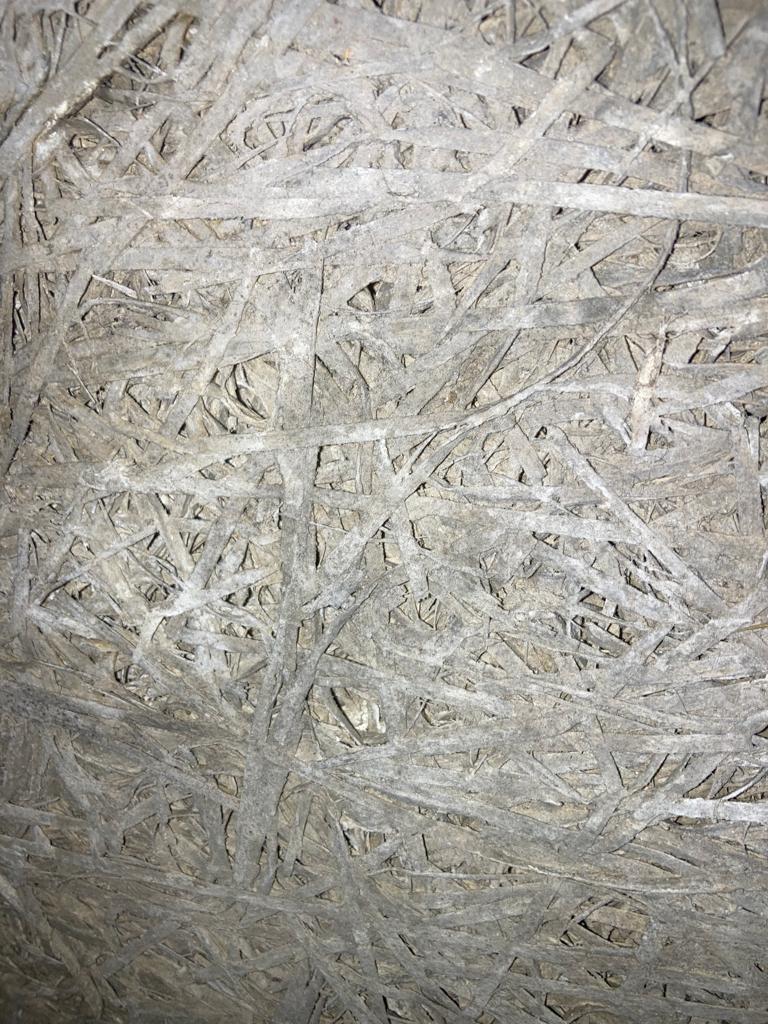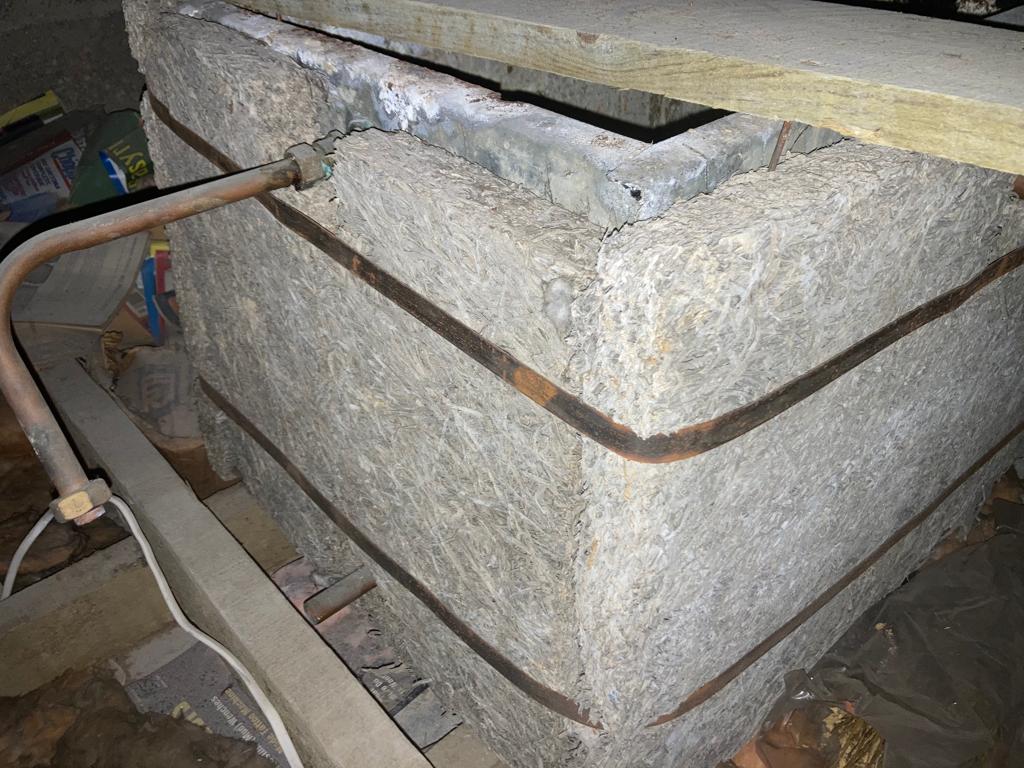.jpg)
What are wood wool slabs?
They're made from mineralised wood. Wood wool is a man-made board material about 50 to 75mm thick comprising shredded timber bound together in a cement paste. softwood shavings (wood wool) that have been coated and bonded with Portland cement and compressed to form low to medium density boards.

When were wood wool slabs used in the UK?
1940’s to 1970s they were very commonly used for construction. Wood wool board is a natural panel consisting of long, strong wood fibres which are bonded into panels by cement-binding agent into a compact coherent structure and used as a natural alternative to plasterboard.
What did they use wood wool for?
Mineral bound wood wool boards are used in a wide range of applications, e.g., thermal insulation, acoustic insulation and indoor decoration.
Why are wood wool slabs a deleterious material?
When placing concrete against the wood wool soffit shutters, inadequate compaction of the concrete could occur due to the compressible nature of the board. This lack of compaction resulted in voids and honeycombing on the soffit of the slab sometimes leaving no cover to the reinforcing steel.
What are the reasons why wood wool slabs are classed as deleterious material?
Wood wool slabs remain on the list of deleterious materials on the basis that poor compaction of the concrete at the time of construction may result in loss of grout and consequent honeycombing of the concrete around the reinforcement at the soffit of a slab or rib. Wood wool slabs are also often thought to contain asbestos. Asbestos is also a deleterious material.
Do wood wool slabs contain asbestos?
Some of the woodwool or concrete framework were lined with asbestos or installed with asbestos lining materials. These materials included asbestos paper or asbestos cement.
Asbestos investigation including sampling is often recommended to confirm the presence of asbestos.
What is stramit board?

Stramit Strawboard is manufactured from straw such as wheat or rice by a patented process of heat and pressure that fuses the straw using its internal resins, making it a completely natural product.
Abroad stramit is called Oriented Structural Straw Board (OSSB) is an engineered board that is made by splitting straw and formed by adding formaldehyde-free adhesives and then hot compressing layers of straw in specific orientations.
When was stramit used in the UK?
The Stramit strawboard technology was invented in Sweden in the 1930s. It was brought to the UK in 1945. Stramit was turned into a building material after the Second World War. It was: affordable easy to manufacture and install. Stramit was used till late 1970s.
What did they use stramit for?
Stramit was used to provide insulation often at roof level and as a permanent shutter to in-situ concrete. Strawboard can be found in: walls ceilings floor decks and roof decks and commonly used for construction particularly in schools and commercial premises but is also often found in residential premises.
What is the issue with stramit, why is stramit a deleterious material?
The main reason why stramit are classed as deleterious material is because when used in flat roof construction they can lose their structural capacity after becoming wet. Stramit board is often thought to contain asbestos, asbestos is also a deleterious material.
Does stramit board contain asbestos?
Some of the stramit or concrete framework were lined with asbestos. These materials included paper linings or asbestos cement. If used in roof construction they were often covered with asbestos containing bitumen, used as waterproofing.
Asbestos investigation including sampling is often recommended to confirm the presence of asbestos.
Are wood wool or Stramit boards a fire risk?
Ceilings constructed with Stramit Board consist of straw fibres, a flammable material; however, the fire resistance of the woodwool itself, albeit minimal, should not be ignored. As there are many types of stramit board and woodwool slabs, each should be assessed independently on its merits and risks. Painting of boards with intumescent paint coating is recommended or fire resistance may be reinstated by the addition of plaster or boarding.
In conclusion
Stramit can be confused with wood wool slabs, which are wood shavings bound in cement (as opposed to straw bound in paper for flat roofs). For more information see Wood wool slabs or cement board. If strawboard has been used as a decking material (without a paper binding), the texture can be similar.
Wood-wool has become a generic term. Many product variations exist which use cement, lime or gypsum to bind wood shavings, wood chip or other wood fibres to form a composite board.
How to work out if asbestos is present in either stramit or wood wool, requires an experienced eye and a closer inspection. Sampling may be required to confirm the presence of asbestos.
How can Summit Environmental help?
- Asbestos testing for stramit board?
- Asbestos testing for woodwool slabs
- Deleterious materials investigation
- Training and awareness on deleterious materials
- Asbestos testing and surveys
- Asbestos management
- Hazardous materials


